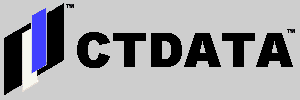The Desolate Wilderness and the Fair Land
This article was originally published on CTDATA.com on November 23, 2000.
Dave Aiello wrote, "There is no doubt in my mind that of all American holidays, Thanksgiving is the greatest. I often wonder how a holiday like this has survived through the constant change that is our nation's history. Yet, all Americans, regardless of our beliefs, take the time to be with friends and family, and to thank God for the blessings that He has bestowed upon us."
"Each year, The Wall Street Journal publishes two articles on its Editorial page on the Wednesday before Thanksgiving. I want to thank them for making these articles available on their free Web Site, OpinionJournal.com. Reading them is one of my favorite moments of the season."
The Desolate Wilderness, taken from Nathaniel Morton's New England's Memorial:
Here beginneth the chronicle of those memorable circumstances of the year 1620, as recorded by Nathaniel Morton, keeper of the records of Plymouth Colony, based on the account of William Bradford, sometime governor thereof:
So they left that goodly and pleasant city of Leyden, which had been their resting-place for above eleven years, but they
knew that they were pilgrims and strangers here below, and looked not much on these things, but lifted up their eyes to
Heaven, their dearest country, where God hath prepared for them a city (Heb. XI, 16), and therein quieted their spirits....
And the Fair Land written by Vermont Royster, 1949:
.... We can remind ourselves that for all our social discord we yet remain the longest enduring society of free men governing themselves without benefit of kings or dictators. Being so, we are the marvel and the mystery of the world, for that enduring liberty is no less a blessing than the abundance of the earth....
Happy Thanksgiving to you and your family from everyone at CTDATA.
